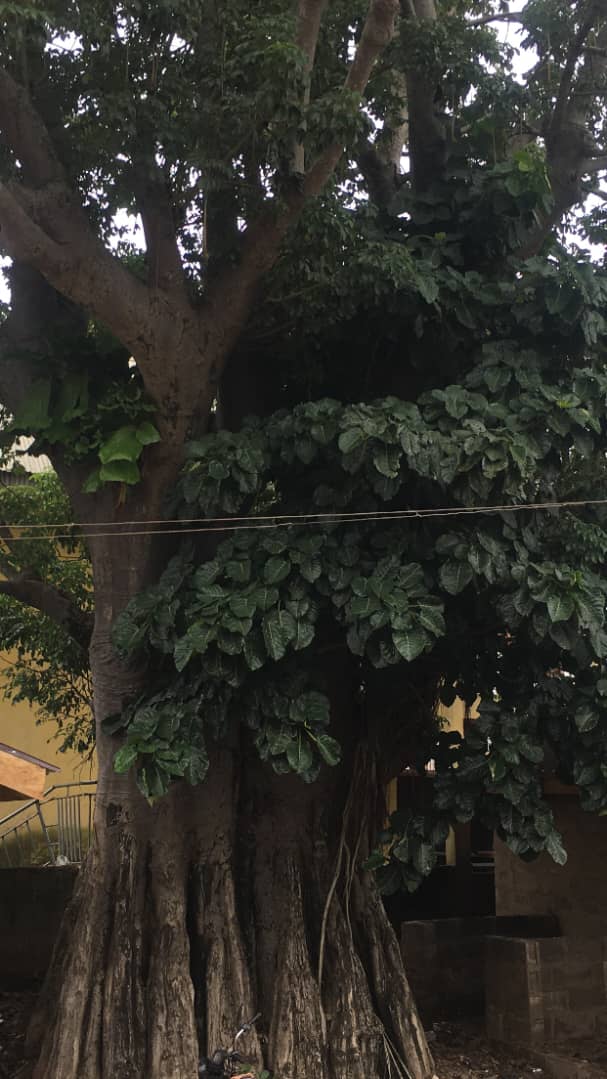Igi Ose is Baobab tree. In Yoruba land, it is usually seen close to the palace of the traditional ruler or in very significant locations in the community. In ancient Isinkan, the Baobab was revered as a sacred and mystical tree.
Isinkan’s mythology claims that the present Baobab, located beside the Oba’s market at Ita-Owa in Isinkan was part of a quartet of Baobab seeds planted by Oba Iralepo Olusi, known by his regnal name, Akologbon. Olusi Akologbon was the first son of Iralepo Owa Obamure who was himself the first son of Iralepo Owena. It was from the latter’s name that the Iralepo obtained his sobriquet of Owenasoro for that was his known regnal name in that era. In those days, the first son of a reigning Iralepo automatically succeeded his father upon the latter’s transition.
Olusi claimed that Ifa directed him to plant seeds in four spiritually significant locations across his then Isinkan country which stretched from Imogun to Ulafon (covering the area now known as Adofure) to Owena river and as far as his then boundary with Ilara.
Traditional rulers of adjoining towns such as the great Alara Ojopagogo, in his deposition at the Morgan Chieftaincy Review Commission of 1977 strongly corroborated the extent of Isinkan land. Olusi planted one seed at the present location in Ita Owa. He planted one between Elegbin and Okearo. He planted one at Ulafon around the area known as Adofure today.
He planted one somewhere between Owena River and his boundary with Ilara. This is one of the reasons both Isikan and the Iralepo are referred to as Onigunmerin ona anaye because each of the Baobab trees came to be associated with a market so to speak. Olusi was nonetheless reputed to have cultivated other special trees. In the past, this particular Biobab was not alone. It used to be surrounded by other trees such as an Ogun tree and an Akoko (Newbouldia) tree. Modernization in the form of road construction and expansion led to the loss of those trees.
Iralepo Olusi was versed in Ifa. This was why he elected to be called Akologbon, the sacred epithet of Omoran who founded the Isinkan Ifa priesthood through his grandson. Olusi is also recognized for the reform of the tradition of Oshugbo Usi to include 14-year-old males of Isinkan hunting wild games in seclusion and unsupervised in a dreaded forest now named Isharun alongside peers from Ilara. Olusi was a bosom friend of Olutipin of Ilara. The tradition was earlier limited to only adult-grade male children as a coming-of-age ritual.
The surviving Baobab used to serve as a market point for the people of Isinkan in their trades with the people of Isolo, Oba, Akure, and Oda at the time. In 1675, when Oba Iralepo Arulewolasi was approached by Oba Gbogi of Akure (himself the grandson of Oba Gbogi (Oligbogi) of Isinkan through his daughter) with the idea from the Osolo for a moat to be dug, Arulewolasi agreed to temporarily relocate to a place behind this market since the traditional rulers of both Akure and Isolo had moved their palaces closer to make the digging of the moat less cumbersome. When the threat from Edo abated, Arulewolasi relocated back to Uponna lila.
The Isinkan palace did not return to its present location until between 1736 and 1742 when Orudu, grandson of Oba Gbogi of Akure again approached Okingoroye, the then Oba Iralepo of Isinkan, and pleaded with him to let them come together as did their fathers to enable them jointly repel the Edo threats.
The thriving market behind the Baobab again became the appealing place for Oba Okingoroye. Since that second time, the place had become the permanent palace of the Iralepo with the old Ipona lila now reserved for the celebration of some Isinkan deities. Both Isolo and Akure palaces have also stayed put in their current locations ever since that last mutual alliance.
Although Isinkan with its traditional institution is older than the Baobab tree because of the length of the reign of the three dynasties of Obara, Oroko, and Oralopo, the tree is however very significant to the people of Isinkan and the current seat of power in Isinkan land.
There are many myths about the tree. The measurable and quantifiable fact is however that it has provided shade for the market for approximately 600 years.
It may however require proper scientific carbon dating to be able to establish the actual time of its sprouting or to establish the real age of the tree relative to the modern calendar.


